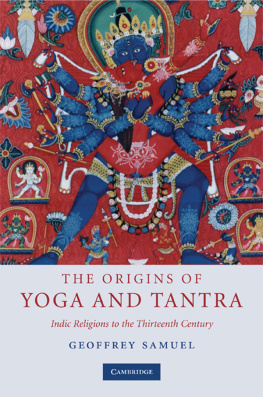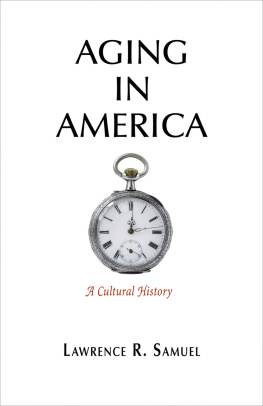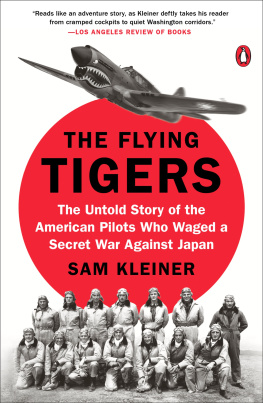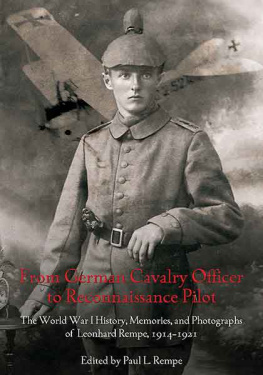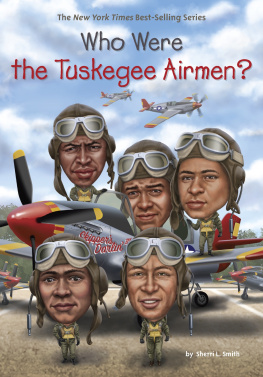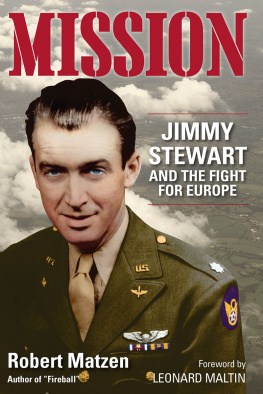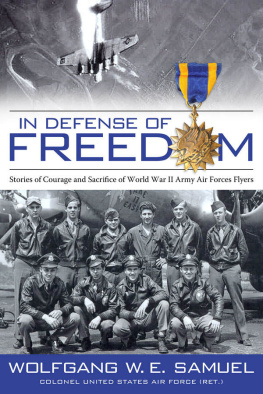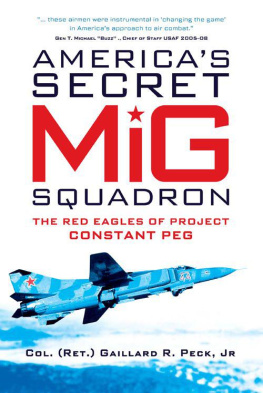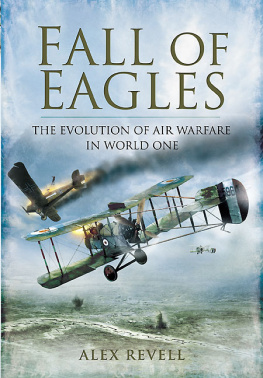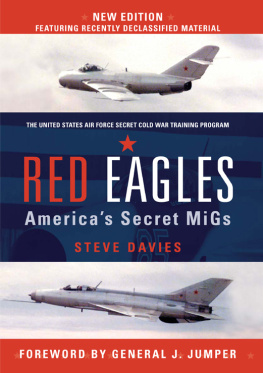Bibliography
Aborted Rescue Haunts Santa Fe Pilot. Santa Fe New Mexican, December 29, 1997: A1, A4.
Aces and Aerial Victories: The U.S. Air Force in Southeast Asia, 19651973. Washington, D.C.: U.S. Air Force, 1976.
Acheson, Dean. The Korean War. New York: Norton, 1971.
. Present at the Creation. New York: Norton, 1969.
Austin, Harold R. A Cold War Overflight of the USSR. Daedalus Flyer 35 (spring 1995): 1518.
Bailey, Bruce M., comp. We See All: A History of the 55th Strategic Reconnaissance Wing, 19471967. N.p.: 55th ELINT Association Historian, 1982.
Berger, Carl, ed. The United States Air Force in Southeast Asia, 19611973. Washington D.C.: Office of Air Force History, U.S. Air Force, 1977.
Berlin Airlift: A USAFE Summary. N.p.: Headquarters, USAFE, 1949.
Blum, Allen H. War Diary of Lieutenant Colonel Allen H. Blum, 19431944. Unpublished manuscript in possession of author.
Burns, Robert. Forty-four Years Later, Families Finally Get Answers. Norfolk Virginian Pilot and Ledger Star, December 4, 1994: A6.
Carastro, L. R., comp. and ed. Of Those Who Fly. [Maxwell Air Force Base, AL]: Air Force ROTC, Air Training Command, 1972.
Clifford, Clark. Counsel to the President. New York: Random House, 1991.
Collier, Richard. Bridge across the Sky: The Berlin Blockade and Airlift, 19481949. New York: McGraw-Hill, 1978.
Dupuy, R. E., and T. N. Dupuy. The Encyclopedia of Military History. New York: Harper and Row, 1970.
Early Cold War Overflights Symposium, Bolling AFB, Washington, D.C. February 2223, 2001.
Frederiksen, Oliver Jul. The American Military Occupation of Germany, 19451953. N.P.: Historical Division, Headquarters, U.S. Army Europe, 1953.
Freeman, Roger A. Mighty Eighth War Diary. London: Janes, 1981.
Hall, R. Cargill. Strategic Reconnaissance in the Cold War. MHQ: The Quarterly Journal of Military History 9 (summer 1996): 10725.
. The Truth about Overflights. MHQ: The Quarterly Journal of Military History 9 (spring 1997): 2439.
Hopkins, J. C. Development of Strategic Air Command, 19461976. [Omaha]: Office of the Historian, Headquarters Strategic Air Command, 1976.
Johnson, Sue. A Special Holiday for Korean War POW. Novato (California) Advance, May 29, 1985: A-20.
Kennan, George F. Memoirs, 19251950, Boston: Little, Brown, 1967.
Lashmar, Paul. Shootdowns. Aeroplane Monthly, August 1994: 611.
. Spy Flights of the Cold War. Annapolis: Naval Institute Press, 1996.
LeMay, Curtis E. Mission with LeMay. New York: Doubleday, 1965.
Lyon, Peter. Eisenhower: Portrait of the Hero. Boston: Little, Brown, 1974.
Manchester, William. The Glory and the Dream: A Narrative History of America, 19321972. Boston: Little, Brown, 1973.
McCullough, David. Truman. New York: Simon and Schuster, 1992.
Miller, Roger G. To Save a City, the Berlin Airlift 19481949, College Station: Texas A&M University Press, 2000.
Momyer, William W. Air Power in Three Wars (WWII, Korea, Vietnam). Washington: Department of Defense, Department of the Air Force, 1978.
Moore, Harold G. We Were Soldiers Once... And Young. New York: Random House, 1992.
Myers, Howard S., Jr. Sky Spy, Air Classics, March 1998.
Palmer, Bruce, Jr. The Twenty-five-Year War: Americas Military Role in Vietnam. Lexington: University Press of Kentucky, 1984.
Peebles, Curtis. Shadow Flights, Presidio Press, Novato, 2000.
Review and Outlook: The Last Ace. Wall Street Journal, January 29, 1999: W11.
Rich, Ben R. Skunk Works. New York: Little, Brown, 1994.
Ridgway, Matthew B. Soldier: The Memoirs of Matthew B. Ridgway. Westport, CT: Greenwood Press, 1956.
Schneider, Donald K. Air Force Heroes in Vietnam. Maxwell Air Force Base, AL: Airpower Research Institute, 1979.
Secrets of the Cold War. U.S. News and World Report, March 15, 1993: 3036.
Smith, Jean Edward. Lucius D. Clay: An American Life. New York: Henry Holt, 1990.
A Special Study of Operation Vittles. New York: Conover-Mast, 1949. Summers, Harry G., Jr. Korean War Almanac. New York: Facts on File, 1990.
. The Vietnam War Almanac. Novato, CA: Presidio Press, 1999.
Technical Order 1R-47H-1 Flight Manual Performance Data. N.p.: U.S. Air Force, 1962.
Thompson, Warren E. The Mustangs Last Hurrah. Wings 12 (February 1982): 2642.
Truman, Harry S. Memoirs. 2 vols. Garden City, NY: Doubleday, 1955.
United States Air Force Combat Victory Credits Southeast Asia. Washington D.C.: Office of Air Force History, U.S. Air Force, 1974.
The United States Military Experience in Korea, 18711982: In the Vanguard of ROK-US Relations. N.p.: Headquarters U.S. Forces, Korea, 1983.
Yeager, Chuck. Yeager. New York: Bantam, 1985.
The Magic of Flying Concluding Thoughts
Regulations Concerning Operation of Aircraft of the U.S. Air Service (1920)
Dont take the machine into the air unless you are satisfied it will fly.
Never leave the ground with the motor leaking.
Dont turn sharply when taxiing. Have someone lift the tail around.
Never get out with the motor running until the pilot relieving you can reach the engine controls.
Pilots should carry hankies in a handy position to wipe off goggles.
Riding on the steps, wings or tail of a machine is prohibited.
In case the engine fails on takeoff, land straight ahead regardless of obstacles.
No machine must taxi faster than a man can walk.
Do not trust altitude instruments.
If you see another machine near you, get out of its way.
Hedge-hopping will not be tolerated.
Pilots will not wear spurs while flying.
If an emergency occurs, land as soon as you can.
L. R. Carastro, comp. and ed., Of Those Who Fly
Many airmen who fought the Cold War succumbed in their youth to the lure of flying, drawn by its promise of freedom and adventure. They may have been next-door neighborsaverage kidsbut their imaginations were far from average, captured by passing barnstormers, by five-dollar rides in open-cockpit airplanes, by the sight of Ford tri-motors on the tarmac, by planes passing overhead, or by Lindberghs epic Atlantic crossing. Some watched in fascination as airliners took off from airports near their homes; others built their dreams into the balsa-wood models they fashioned at the kitchen table. But all spoke of being inspired by the magic of the airplane, the magic of flying. I always wanted to fly, Ralph Kuster, Sam Myers, Ed Gorski, Joe Laufer, Ed Rider, Moe Hamill, Dave Taylor, Hal Austin, and Hack Mixson told me, just to fly. I know what they mean. Flying was also my dream as a child living in postWorld War II Germany, watching the Americans flying their heavily laden C-54 transports overhead during the Berlin Airlift. Those Cold War airmen did not see themselves as heroes or patriots. During many of my interviews, these flyers tried to convince me that their experiences were not extraordinary and that they merely did what anyone else would have done in similar circumstances. But there is no doubt in my mind that these men were patriots. There is no doubt that they achieved extraordinary things. There is no doubt that they were leaders, each in his own way.
I believe we need to continue to foster the magic of flight that captured the youngsters who became the airmen of the Cold War. We need to foster dreams of new frontiers in the minds of our youth, tomorrows airmen and airwomen, if we are to sustain our enviable tradition of success, often against great odds. The odds of which I speak surely will be different in the future, not necessarily the odds of greater numbers fielded by an enemy, but rather approaches to warfare ingenious and unconventional, designed to diminish the viability of the United States.


